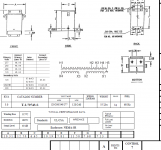winnie said:
I do not believe you are missing anything.
To supply the transformer you need 2 'hots' from your supply to provide 208V to the transformer.
You also need to protect this circuit with an EGC.
You do _not_ need a supply neutral. You need to repurpose your 'N' wire as an EGC.
Confirm that the supply neutral is in fact connected to the supply ground bus, which _may_ be the neutral bus only at the service equipment. If your supply is a 'sub-panel' then ground and neutral should be separate, and you may need to move the wire at the supply side. Additionally the _color_ of this wire might not be correct, and you may need to jump through some hoops there.
The transformer itself creates (or 'derives') a new source of current. You ground the neutral of the transformer secondary to create a proper grounded system.
-Jon
Hello Jon and thank you.
Please don't laugh. I can't open the Source Panel because its directly after the Utility Transformer and right now, there is no Main Disconnect Switch between the Utility and the Main Panel (Somebody made a mistake ). Even if I close the Main Breaker at the Source Panel, the incoming side of the Main breaker is Hot from the Transformer and City Rules prevent opening a Hot Panel. To open the Panel, I would have to call the Utility and shut down an entire City office building.
Can you enlighten me as to where the Neutral taps are on the Secondary?
Are you referring to the X3 and X2 tie?


